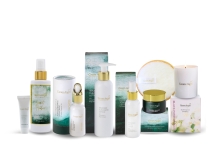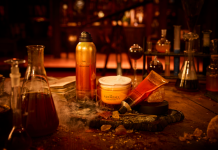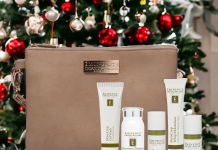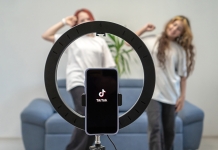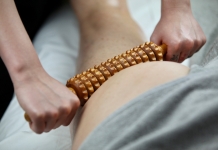Marks the Spot: Treating Hyperpigmentation
Salon treatments and homecare to address dark spots and uneven skin tone.

As summer draws to an end, it's possible you'll see an increase in clients experiencing hyperpigmentation to their skin.
You'll know that melanin is stimulated by exposure to ultraviolet light (from the sun and sunbeds) as a natural skin protector. The more exposure, the more melanin is produced. Whilst this may result in a much-desired tan, when skin is overexposed to UV areas can remain permanently pigmented, with an uneven skin tone that can be difficult to treat.
“Hyperpigmentation is a very common condition that is characterised by dark spots or patches of skin that result from increased melanin production,” explains Marsha Abrahams of
Boost Beauty Solutions Ltd. “When there is a rapid increase in melanin levels, the excess amount accumulates in the surface layers of the skin and is unevenly distributed. This results in hyperpigmentation of the skin.”
“Whilst hyperpigmentation won't cause any harm, it can be quite distressing and cause anxiety because the client isn't happy with their appearance.” - Marie-Louise Coster, skin specialist and educator.
Some clients may be genetically predisposed to melasma such as those with freckles but what clients may not realise is that they can also be causing damage to skin whilst using their tablets and smartphones. High-energy visible (HEV) light emitted from screens, also known as blue light, stimulates melanin production which may lead to increased pigmentation.
In addition, skin is also vulnerable to melasma due to hormonal changes (oral contraceptives, pregnancy and menopause), prescribed medications such as antibiotics and chemotherapy drugs or through skin trauma from cuts or burns or inflamed by acne. Skin therapist and Educator Marie-Louise Coster of
All About Mi Training Academy explains:
“Many who suffer with acne find that once the acne has gone they are left with post-inflammatory hyperpigmentation which has occurred due to the trauma and inflammation the skin has experienced during the period of acne. Again, just like with UV, excessive melanin is produced by the body in response to protecting it from the irritation, or injury, that the acne has caused.
“Whilst it won't cause the client any harm, it can be quite distressing and cause anxiety because the client isn't happy with their appearance.”
Luckily treating pigmentation, whilst challenging, is possible. “It is really important to manage the clients' expectations and make them fully aware that the appearance of pigmentation will get worse before it gets better,” adds Marie-Louise. “This is because we can't see how deep the pigmentation is from the surface, and once we start treating it and bringing it to the surface it will get darker and worse before it gets better, and the client needs to be prepared for that.”
“To achieve the best results, I recommend a combination of in-salon treatments and at-home skincare products tailored to clients' specific needs” - Eavanna Breen, Facialist
Marie-Louise continues:
“Hyperpigmentation is most successfully prevented by the use of SPF every day, irrelevant of weather. Ideally an SPF that is both chemical and mineral to provide a broad spectrum of protection, but also something that has blue light protection in it.
“When it comes to post-inflammatory hyper pigmentation, in addition to the use of a daily SPF it is really important not to exacerbate the trauma to the skin so not picking, using dermaceutical grade products that will hydrate and heal the skin whilst treating the acne, and having regular treatments to treat the skin.”

“In the event that the client already has visible signs of hyperpigmentation there are many treatments available that will help to reduce the appearance of the pigmentation,” says Marie-Louise. “Treatments such as laser (which break down melanin deposits), facial peels, micro needling and microdermabrasion can all help the appearance.”
Chemical peels that exfoliate the outer layers of the skin can be a useful tool in your arsenal. “Certain peeling agents, like alpha hydroxy acids (AHAs), can penetrate the skin and inhibit melanin production, reducing the appearance of dark spots and pigmentation over time,” explains Facialist Eavanna Breen of the
Eavanna Breen Skin and Laser Clinic in Dublin.
“To achieve the best results, I recommend a combination of in-salon treatments and at-home skincare products tailored to your specific needs,” Eavanna adds.
Marie-Louise agrees, saying: “The use of home care is really key in this situation as there are lots of products with various ingredients such as Kojic Acid, Azelaic Acid, Niacinamide etc. that can have great effects in reducing pigmentation.
“Whilst there are many treatments available, with varying levels of success, the best thing any of us can do is educate our clients and teach them to treat their skin to prevent the hyperpigmentation ever occurring. In this situation prevention really is better than cure.”
It should also be noted that the use of a broad spectrum sunscreen should be advised throughout treatment for hyperpigmentation.
Facialist Eavanna Breen's favourite ingredients to treat hyperpigmentation...
- Kojic Acid inhibits the production of melanin, making it a powerful ingredient for fading dark spots and improving skin clarity. Products containing Kojic Acid can be used daily to lighten hyperpigmented areas over time.
- As an alpha hydroxy acid (AHA), Glycolic Acid exfoliates the skin, removing dead skin cells and promoting cell renewal. This helps to reduce the appearance of dark spots and improve overall skin texture.
- Arbutin is a natural skin brightener that inhibits melanin production. It is gentle on the skin and can be used to treat various forms of hyperpigmentation, including sun spots and melasma.
- Vitamin C is known for its brightening and antioxidant properties. It helps to fade dark spots and prevent further pigmentation by protecting the skin from free radical damage.
Let's take a look at treatment options...

Part of
Repêchage's Biolight® line, Brightening Serum controls the appearance of uneven skin tone, dark spots and hyperpigmentation thanks to the brand's marine bio-technology.
It features Repechage's exclusive Laminaria Complex of seaweeds combined with Willow Bark, Gotu Kola and Licorice extracts. In addition, Diglucosyl Gallic Acid has skin brightening and anti-inflammatory properties.
The Repêchage Biolight® Brightening collection also comprises Cleanser, Toner, Day Cream, Overnight Cream and a Sheet Mask. With regular use, skin appears more radiant and refined with a more even tone.

In under six weeks,
Dermalogica's Melanopro Peel System fight stubborn hyperpigmentation will then visibly fade or disappear altogether. This two-phased treatment consists of a Peeling Masque applied within a professional facial, followed by a clinical strength homecare routine.
Key ingredients within the Melanopro Peel include Azelaic Acid, Glycolic Acid, Lactic Acid, Salicylic Acid, Retinol and Niacinamide.
To fight stubborn hyperpigmentation, the Peeling Masque is applied in the salon and left on the skin for three to seven hours.
For the next six weeks, clients apply Continuous Resurfacing Cream two to three times a day to stimulate continuous exfoliation thanks to its formulation of 10% Azelaic Acid, Tranexamic Acid, Glycolic Acid, Lactic Acid, retinol, hedylresorcinol, niacinamide and a brightening peptide Acetyl Hexapeptide-1. Throughout the treatment period, clients also use Dermalogica Ultracalming Mist to soothe the skin throughout the day, locking in hydration and supporting proper skin barrier function.
The Melano Peel System can used alone or in combination with chemical peels, lasers, IPL, microneedling or dermaplaning.

SkinBase™ Microdermabrasion gently improves the appearance of uneven skin tone and pigmentation using a fine jet of abrasive crystals to gently remove the outermost layer of dead skin cells. This not only minimises the appearance of pigmentation but also stimulates cell renewal so that skin has a more even appearance.
Treatments take as little as 30 minutes, with a single SkinBase™ treatment removing up to three times the number of dead skin cells in a single session than other exfoliating treatments. The number of treatments required will depend on the severity of hyperpigmentation being treated.
Alternatively, the company's new treatment, SkinBase™ Hydro, is a multi-step process that gently cleanses, exfoliates with a peel and infuses skin with a blend of active ingredients including AHAs and BHAs which target a specific concern, in this case hyperpigmentation. The serum is applied using a vacuum action, so ingredients are delivered more effectively into the skin.
The treatment concludes with the application of SkinBase™ professional skincare products.

Nimue SRC
™ (Skin Resurfacing Complex) for Problematic Skin is now available in single use pods to treat uneven skin tone and hyperpigmentation as part of a professional salon treatment.
This concentrated keratolytic peel offers progressive and superficial resurfacing of the skin, stimulating epidermal growth through the removal of the damaged outer layers of the stratum corneum.
It is formulated with five skin resurfacing compounds with added treatment properties in specific combinations and concentrations that decongest the skin, refine and soften the skin and improve pore texture and size.
Suitable for use only by Nimue Advanced trained practitioners, available from
Sweet Squared Ltd.

“No one understands hyperpigmentation as much as the Koreans, and their products are well known around the world to produce glass, porcelain results,” says Marsha Abrahams of
Boost Beauty Solutions Ltd, distributor of the Storyderm Dermatology Skincare line. The brand combines traditional ingredients with the Osmocell
™ advanced delivery system to provide targeted solutions.
Storyderm's O2 White line improves bright, firm and healthy skin with antioxidant, whitening, brightening and antibacterial/anti-inflammatory effects thanks to seven types of complex plant extracts.
The Storyderm 02 White salon facial features the O2 White Peel with ultra-fine diamond powder and PHA (Gluconolactone) to enhance skin radiance and even skin tone. The treatment also includes O2 White Mask, a gel to foam sheet mask with Niacinamide which reduces melanin movement by up to 68% and has a whitening effect by suppressing pigmentation.
A range of homecare products to enhance results is also available including the O2 White Aqua treatment toner which can be applied up to seven times as part of the Storyderm ‘7 skins' method.

O Cosmetics Bio-White Peptide Peel, available through
Zolo Beauty, is a high strength vitamin C and peptide peel that treats pigmented, uneven, dull and devitalised skin in the salon.
It features a biomimetic peptide encapsulated in a liposome for optimal whitening and brightening effects. Concentrated vitamin C, encapsulated Resveratrol, Niacinamide and natural fruit acids stimulate cellular turnover whilst protecting collagen and elastin.
This is complemented at home with O Cosmetics Concentrated Brightening Serum, formulated with blue-biotechnology brightening actives, botanical exfoliants and Flashwhite Unispheres™. These active beads, made from a pure whitening pigment combined with natural extracts, break on application releasing the brightening actives. Follow with O Cosmedics hydrator and SPF daily.

Mila d'Opiz Mila White Shade line, available from
Sunaura Distribution, combats hyperpigmentation from age spots, summer freckles and other discolouration caused by excess melanin, resulting in brightened more radiant complexion and reduction in pigmentation.
Key ingredients include SulforaWhite, a liposomal preparation of Swiss garden cress sprouts rich in sulfraphane, which neutralises reactive oxidants generated by UV in keratinocytes, and inhibits a-MSH, a natural hormone that stimulates skin pigmentation. In addition, liposomal preparation NanoWhite inhibits tyrosinase activity, the key enzyme of the pigmentation process, thanks to naturally-occurring Arbutin.
The Mila White Shade line comprises professional cleansing foam and a highly-concentrated ampoule for use in the salon along with a 24-hour cream and a Vision Serum, both in professional and homecare sizes.
